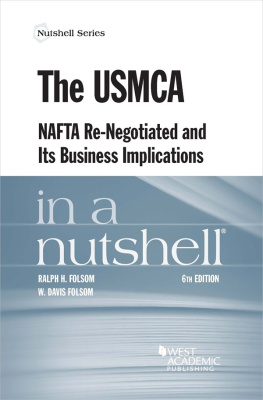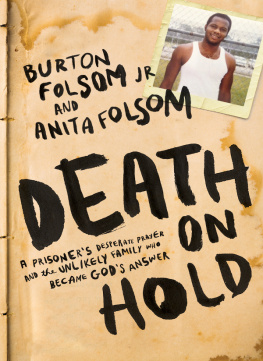Acknowledgments
A few of the people I interviewed asked me not to use their real names in the text. I have honored that to protect their privacy.
Other than the rare pseudonyms, the story is true. There are no fictional or composite characters. Dialogue is re-created from court documents, police records, interviews, and testimony.
Finally, please permit me to acknowledge:
My agent, Susan Crawford, Crawford Literary Agency, who always had the right word at the right time,
My editor, Paul Dinas, of Pinnacle Books, who knows the right words when he sees them, and is a master at sorting out writers scrambled words, and
The most important person of all, without whom all of these words would be wasted; You, the reader. I thank you.
Don Lasseter
Epilogue
The appeals process for convicted murderers, especially those sentenced to death, is perhaps the most convoluted, complex, and prolonged labyrinth in the entire judicial system. By the end of 1994, nearly 400 condemned killers were lodged at various stages in Californias pipeline of appeals. Five of them, including Cynthia Lynn Coffman, were women.
Between 1967 and 1994, only two executions were carried out. After a twenty-five year hiatus, Robert Alton Harris died in the gas chamber in April 1992 and David Edwin Mason, rejecting all appeals, in haled the lethal hydrogen cyanide in August 1993. Ten of the condemned committed suicide, one was murdered in the exercise yard, seven died from other causes, and forty-seven were resentenced to prison terms after courts decided to overturn the death sentences.
It is unlikely that any of them will ever step into the gas chamber, since the state passed a law in 1992 giving Death Row convicts a choice between cyanide gas and lethal injection.
In Californias history, only four women have been executed. Juanita Spinelli, a gang leader in San Francisco, drowned a squealer in the Sacramento River, and was executed for it in 1941. Six years later, Louise Peete, a housekeeper who put a bullet in the brain of her female employer, died in the gas chamber. Perhaps the most famous and controversial of the four was an ex-prostitute named Barbara Graham, who was convicted of joining two men in the murder of a wealthy Burbank woman. Susan Hayward won an Oscar for her portrayal of Graham in the 1958 motion picture, I Want To Live , and Lindsay Wagner repeated the role in a 1983 made-for-television movie. In both productions, it was suggested that Graham was framed. When she was finally strapped into a chair in the apple-green execution chamber, on June 3, 1955, a guard advised her, Take a deep breath and it wont be so bad.
Barbara Graham snapped back, How the hell would you know?
In the 1959 capital murder trial of Elizabeth Duncan, her own son acted as co-counsel on her defense team, even though the victim was his wife. Duncan had paid two men $6,000 to kill her. The three conspirators were executed on August 8, 1962, seven months after Cynthia Lynn Coffman was born.
Legal experts agree that it will be a long time, if ever, before either Coffman or James Marlow will face execution. The complex trial in San Bernardino will be examined microscopically to determine if there were any violations of Constitutional guarantees, and then the same scrutiny will apply to the Orange County trials.
Meanwhile, Cynthia Coffman is an inmate of a new prison in Central California, near Chowchilla, where she waits with four other condemned women. She has a private room with a small black-and-white television set, a bunk, and minimal furniture. Library and exercise facilities are available.
James Marlow is still concerned about being murdered in San Quentin prison, where he is confined with the scores of men on Death Row. He has collected reams of documentation to prove that paid hit men have tried to kill him. He has avoided assassination, he says, only by his own careful wiles and by the grace of God. Marlow underwent psychological examination in the prison hospital, in 1993, and was returned to Death Row.
Leonard Gumlia still firmly believes that Cynthia Coffman had no intent to kill, and simply acted under the emotional and physical influence of Marlow. He has handed over his extensive files to her appeals attorneys who will pursue motions for reversal, up to the U.S. Supreme Court, if necessary. Gumlias paralegal assistant, Kristen Widmann, has visited Coffman and maintains correspondence with her. In July 1993, Leonard and Kristen were married.
Alan Spears, who married the San Bernardino jury foreperson, accepted a position as court commissioner in Los Angeles County. He and his wife live on a comfortable boat in Newport Harbor, not far from the bank where Cynthia Coffman withdrew Lynel Murrays savings.
Raymond Chip Haight III continues prosecuting major cases in San Bernardino County, and supervises a special D.A. unit to combat gangs. In 1991, he convinced a jury to bring in a verdict of first degree murder against the brutal killer of a homosexual victim. The defendant was represented by Alan Spears.
Bob Gannon accepted a promotion to supervise a unit dedicated to consumer and environmental protection. He returned to a courtroom in 1993 to again prosecute the child killer whose case had been overturned by a judge. Gannons efficiency and skills resulted in another conviction of first degree murder with special circumstances, and a new death sentence.
Susan Dolstra, the juror in Marlows trial who became so fascinated with the process that she kept a journal during her daily attendance of Coffmans trial, turned over all of her notes to the author. In mid 1993, she accepted a position on the county payroll, in an office directly across the street from the courthouse.
Judges Don Turner and Don McCartin retired from the bench in 1993. Both men periodically preside over trials on a contract basis.
George Peters is one of the busiest and most successful attorneys in Orange County. His co-counsel for Marlow, Charles Margines was promoted to the municipal court bench in May 1993.
Dick Hooper continues to chase felons for the Huntington Beach Police Department. Scotty Smith left Redlands and joined the Police Department of Pismo Beach, a peaceful oceanfront town on Californias central coast. Asked if he still works homicide cases, he answered, We dont have any.
Trooper-Detective Colan Harrell has spent more than twenty-three years ferreting out criminals in Southern Kentucky, and wishes that he could continue for another twenty-three years.
The State of Kentucky considers the murder of Gregory Wildman Hill solved, but is holding possible prosecution of Marlow and Coffman in abeyance. It is unlikely that the case will ever reach a court, since key players Killer Compton and Lardo Lyons are both dead.
Jerome and Joanne Hill, the parents of Greg Hill, reside in rural Wayne County, Kentucky, still convinced that some of the local boys had more to do with their sons death than was ever revealed.
Donna and Bill Novis live in the modest little home in Gooding, Idaho, where Corinna was raised. In the wholesome small-town atmosphere, they frequently spend Sundays with William, Jr., Brenda, and five beautiful grandchildren.
Don Murray and Jacque, with their two daughters, Holly and Erin, live in La Habra, and remain active in his trucking business and the church.
















